- Author: Kathy Keatley Garvey
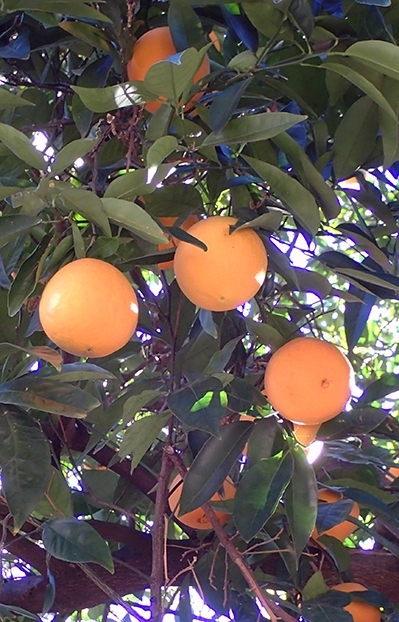
The insect, a native of Asia, was first detected in the United States (Palm Beach County, Florida) in 1998, and California (San Diego County) in 2008. HLB, the bacterial disease that it transmits, was first detected in Florida in 2005, and in California (Hacienda Heights, Los Angeles County), 2012.
“The ACP has the potential to establish itself throughout California wherever citrus is grown,” according to the California Department of Food and Agriculture (CDFA).
Now an international team of scientists, led by chemical ecologist Walter Leal of the University of California, Davis, has discovered a new lure or male attractant that's more efficient and effective than the current trap surveillance system of yellow sticky traps.
“Our newly discovered lure captures an average of three times more ACP than the current trapping system, the sticky yellow traps,” said Leal, a distinguished professor in the Department of Molecular and Cell Biology and a former chair of the Department of Entomology and Nematology. “And it works in areas with low population densities. This is particularly important in California, because HLB is already established in urban areas and, therefore, trap surveillance systems are at a premium.”
The research, “Laboratory and Field Evaluation of Acetic Acid-Based Lures for Male Asian Citrus Psyllid, Diaphorina citri, is published today (Sept. 9) in Scientific Reports. It can be accessed free online at https://www.nature.com/articles/s41598-019-49469-3.
The 16-member team, which includes scientists from Brazil and Costa Rica and Benjamin Lehan of California State Polytechnic University, Pomona, wrote in their abstract: “Lures are much needed for improving ACP trapping systems for monitoring populations and surveillance. Previously, we have identified acetic acid as a putative sex pheromone and measured formic acid- and propionic acid-elicited robust electroantennographic responses. We have now thoroughly examined in indoor behavioral assays (4-way olfactometer) and field tests the feasibility of these three semiochemicals as potential lures for trapping ACP. Formic acid, acetic acid, and propionic acid at appropriate doses are male-specific attractants and suitable lures for ACP traps, but they do not act synergistically.”
“An acetic acid-based homemade lure, prepared by impregnating the attractant in a polymer, was active for a day,” they wrote. “A newly developed slow-release formulation had equal performance but lasted longer, thus leading to an important improvement in ACP trap capture at low population densities.”
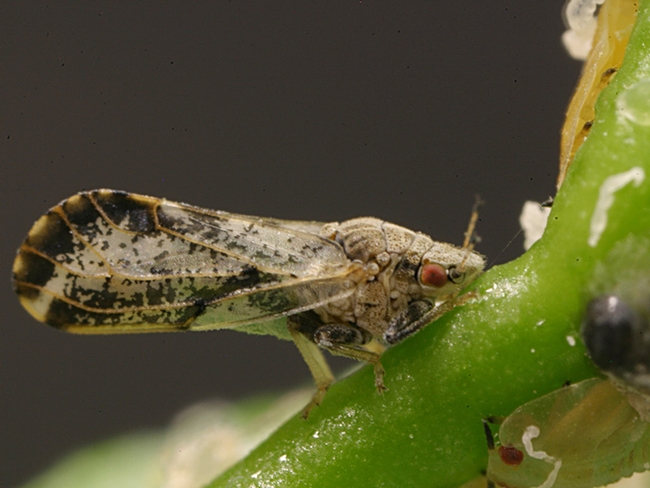
“The disease has ravaged the citrus industry in China and Brazil,” said Leal, a native of Brazil. “In Brazil, about one-fourth of the citrus trees in the state of São Paulo has been eradicated since 2004 as part of an HLB control strategy. Florida has also sustained severe losses.
Now the disease threatens California's citrus growers “Of note, 1,100 findings of HLB in urban, but not in commercial orchards, suggest that the disease is already established in urban areas in California,” the scientists wrote. “Monitoring ACP populations is essential for integrated vector management and, more importantly, for surveillance. One of the challenges for abatement personnel in areas of low ACP densities is to capture the vector to determine infection status so that control strategies can be implemented before HLB is spread. Therefore, the development of trapping systems is at a premium, particularly the discovery of lures for enhancing ACP captures in areas of low populations.”
Earlier, an international team of scientists led by Leal identified the sex pheromone of the Asian citrus psyllid. Leal, a fellow of the Entomological Society of America and the Entomological Society of Brazil, announced the discovery, encompassing six years of research, at the 10th Annual Brazilian Meeting of Chemical Ecology in Sao Paulo in December 2017. (See Bug Squad blog)
Pheromones and other semiochemicals are widely used in agriculture and medical entomology. “Growers use them as lures in trapping systems for monitoring and surveillance, as well as for strategies for controlling populations, such as mating disruption and attraction-and-kill systems,” Leal noted.
In response to the ACP invasion in California, the CDFA has launched an extensive monitoring program to track the distribution of the insect and disease. They check yellow sticky traps in both residential areas and commercial citrus groves, and also test psyllids and leaf samples for the presence of the pathogen.
Survey methods for ACP include visual inspections; sweep netting, and placement of yellow sticky traps in trees in citrus nurseries, commercial citrus-producing areas and residential properties throughout the state, according to the CDFA. They also place sticky traps in California fruit packing houses, specialty markets, retail stores and airports that receive such produce from areas known to be infested with ACP.
CDFA has set up a hotline at (1-800-491-1899) for residents to report suspicious insects or disease symptoms in their citrus trees.
Resources:
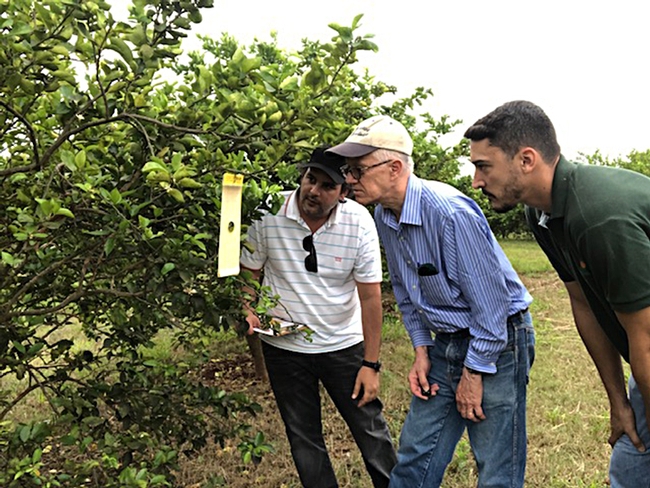
- Author: Kathy Keatley Garvey
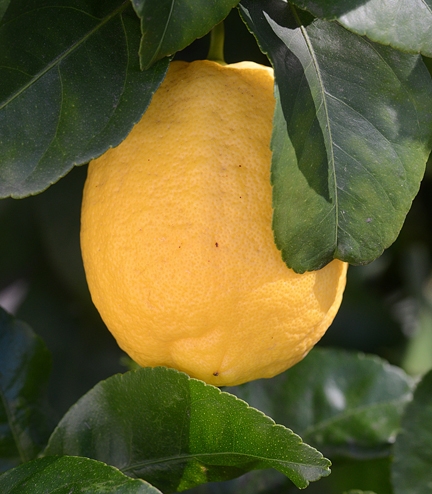
But Mark Hoddle, Extension entomologist and director of the Center for Invasive Species Research at the University of California, Riverside, is.
The Asian citrus psyllid or ACP, a mottled brown insect about the size of an aphid, has emerged as the most important exotic insect pest of citrus in California, and he, along with many others, is targeting it.
Hoddle will speak on “Protecting California Agriculture from Invasive Pests: Biocontrol of Asian Citrus Psyllid in Urban Southern California" when he presents the UC Davis Department of Entomology and Nematology's first seminar of the fall quarter on Wednesday, Sept. 26.
His lecture is from 4:10 to 5 p.m., Wednesday, Sept. 26 in 122 Briggs Hall, announced seminar coordinator Geoffrey Attardo, assistant professor and medical entomologist, UC Davis Department of Entomology and Nematology.
ACP or Diaphorina citri feeds on phloem juice in new leaf growth, deforming the leaves, but more importantly, Hoddle and fellow researchers point out, it vectors the bacterium (Candidatus Liberibacter asiaticus) that causes "the lethal and untreatable citrus disease," huanglongbing (HLB), also called citrus greening disease.
Now researchers are applying an alternative approach, a classical biological control program using two parasitoids from Parkistan. They attack the psyllid nymphs.
As its name implies, the Asian citrus psyllid originated in Asia. It has now spread throughout much of the world, including parts of the Middle East, South and Central America, Mexico and the Caribbean. It was first detected in Florida (Palm Beach County) in 1998, and is now found in Louisiana, Georgia, Arizona, South Carolina, Texas and California. It was first detected in California (San Diego County) in August of 2008. It is a major threat to the multibillion dollar citrus industry in the United States.
The UC Statewide Integrated Pest Management Program has published a Pest Note about the disease and tells how to inspect your citrus trees:
"Homeowners and landscapers can help combat the psyllid by inspecting their citrus trees and reporting new infestations of the Asian citrus psyllid or suspected cases of the disease. The best way to detect the psyllid is by looking at tiny new leaves (feather flush growth) on citrus trees whenever new leaves are forming on the tree. Mature citrus trees typically produce most of their new growth in the spring and fall, but young trees and lemons tend to produce flushes of new growth periodically during warm weather."
"Slowly walk around each tree and inspect the flush growth. Look for signs of psyllid feeding and damage, including twisted leaves, waxy deposits, honeydew, sooty mold, and adult psyllids."
"If you think psyllids are present, use a hand lens to look for small yellow eggs, psyllid nymphs with their waxy tubules, and adults. Immature stages (eggs and nymphs) are limited to tender new leaves and they don't fly, so monitoring efforts are most effective when directed toward these stages on feather flush."
"If you think you have found the insect, immediately contact the CDFA Exotic Pest Hotline at 1-800-491-1899. CDFA staff will tell you if you are in an area that is new to the psyllid or if it is common in your area."
Hoddle, an Extension specialist, received his bachelor's degree (1988) and master's degree (1991) in zoology from the University of Auckland, New Zealand. He holds a doctorate in entomology (1996) from the University of Massachusetts, Amherst.
Since 1997, Hoddle has focused his research on biological control as a tool to reduce the impact of invasive pest species to agriculture, urban and natural areas, with a primary focus on issues affecting California. These programs, he says, often require long periods of overseas research in the home range of the target pest and searching for and studying natural enemies for possible use in biological control.
Hoddle received the Entomological Society of America's "Recognition Award in Entomology" in 2007, after earlier winning the the Pacific Branch of ESA award.
Attardo says that all seminars will take place on Wednesdays at 4:10 in 122 Briggs Hall, located on Kleiber Hall Drive.

Wednesday, Oct. 3
Daniel Karp, assistant professor in the UC Davis Department of Fish, Wildlife, and Conservation Biology: "Harmonizing Biodiversity Conservation with Agricultural Production Across Working Landscapes"
Host: Jay Rosenheim, professor, UC Davis Department of Entomology and Nematology
Wednesday, Oct. 10
Alexander Raikhel, distinguished professor of entomology, UC Riverside: "The Role of Hormone Receptors and MicroRNAs in Mosquito Reproduction and Metabolism"
Host: Geoffrey Attardo
Wednesday, Oct. 17
Arnaud Martin, assistant professor of biology, George Washington University: "Do Butterflies Dream of Genetic Tattoos? Exploring the Genotype-Phenotype Map Using CRISPR"
Host: Geoffrey Attardo
Wednesday, Oct. 24
Naoki Yamanaka, assistant professor, UC Riverside: "A Membrane Transporter Is Required for Cellular Uptake of Ecdysone"
Host: Geoffrey Attardo
Wednesday, Oct. 31
Fred Wolf, assistant professor, UC Merced: (tentative title) "Drunken Drosophila and the Coding of Brain Plasticity"
Host: Joanna Chiu, associate professor and vice chair, UC Davis Department of Entomology and Nematology
Wednesday, Nov. 7
Lark Coffey, assistant professor in the Department of Pathology, Microbiology and Immunology, UC Davis School of Veterinary Medicine: "Zika Virus in Macaques, Mice and Mosquitoes: Contrasting Virulence and Transmissibility in Disparate Hosts"
Host: Geoffrey Attardo
Wednesday, Nov. 14
(No seminar; Entomological Society of America's annual meeting takes place from Nov. 11-14 in Vancouver, B.C.)
Wednesday, Nov. 21
(No seminar; Thanksgiving week)
Wednesday, Nov. 28
Robert Page, Provost emeritus of the University of Arizona and emeritus professor and chair of the UC Davis Department of Entomology and Nematology: "Reverse Engineering Social Structure in Honey Bees: a 25-Year Journey"
Host: Steve Nadler, professor and chair, UC Davis Department of Entomology and Nematology
Wednesday, Dec. 5
Cindy Preto, recent graduate (master's degree in entomology from UC Davis, Frank Zalom lab) "Behavior and Biology of the Three-Cornered Alfalfa Hopper in Vineyards."
Host: Frank Zalom, distinguished professor, UC Davis Department of Entomology and Nematology
For more information on the seminars, contact Attardo at gmattardo@ucdavis.edu.
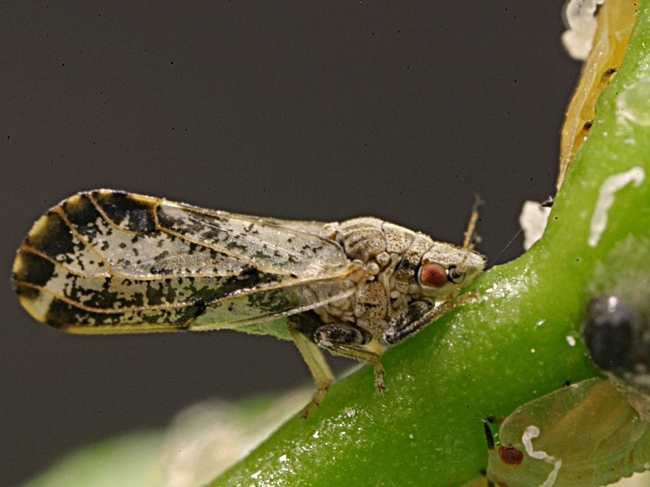

- Author: Kathy Keatley Garvey
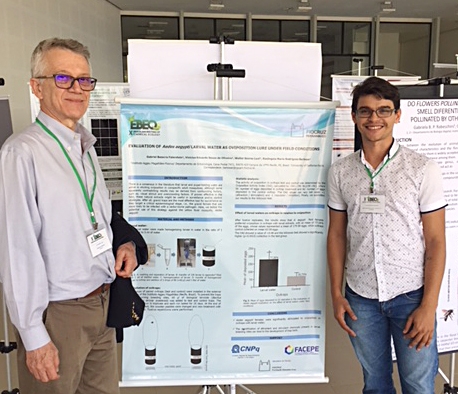
If all goes as planned, UC Davis chemical ecologist Walter Leal's discovery of the sex pheromone of the Asian citrus psyllid--which spreads the deadly citrus greening disease, Huanglongbing (HLB)--may result in the insect version of “The Fatal Attraction.”
“We are now working on a formulation to be used in traps,” Walter Leal said this week. “This might take a year, but hopefully will be ready before the flight season in California.”
Leal, who led an international team of scientists in the six-year research project, announced the discovery Dec. 5 at the 10th Annual Brazilian Meeting of Chemical Ecology in Sao Paulo. Leal is a native of Brazil and a fellow of both the Entomological Society of America and the Entomological Society of Brazil.
“The Asian citrus psyllid (ACP) is a major threat to the multibillion dollar citrus industry in the United States,” said UC Cooperative Extension advisor Surendra Dara of San Luis Obispo and Santa Barbara counties. “When an insect pest vectors a deadly disease, the threat is more serious and ACP being an invasive pest made its management even more challenging. Discovery of a sex pheromone by Dr. Leal's team is a major breakthrough not just for managing a dangerous invasive pest, but also a significant contribution to environmental sustainability. I envision this pheromone becoming a clean, green, mean weapon in the IPM arsenal against ACP.”
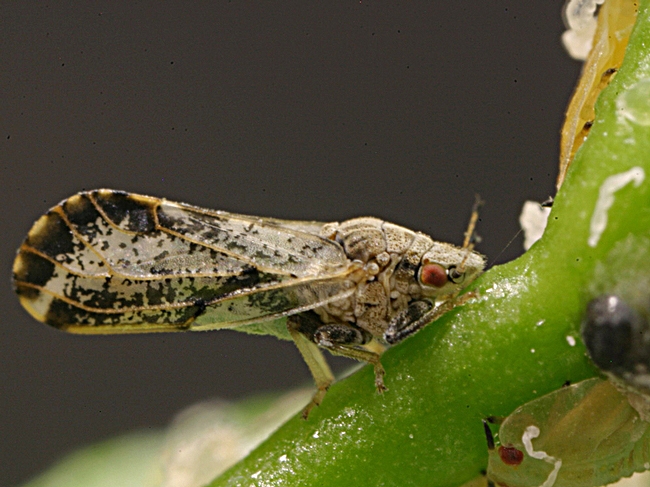
Joel Nelsen, president of the California Citrus Mutual, called the discovery “exciting news” and a “first step toward protecting the citrus industry. We're hoping that the next steps come in time to protect thousands of citrus growers around the country.”
“Let's move forward fast and furious,” he said, noting that the citrus industry spends millions to support the research community.
The Leal-led research team was funded solely by Fund for Citrus Protection (FUNDECITRUS).
Integrated pest management specialist Frank Zalom, distinguished professor with the UC Davis Department of Entomology and Nematology and a past president of the Entomological Society of America, hailed the discovery as a “significant breakthrough in preventing the spread of this serious citrus insect, and may offer a less toxic method for its control.” He was not involved in the study.
Kris Godfrey, associate project scientist at the UC Davis Contained Research Facility and formerly with the California Department of Food and Agriculture, agrees that better detection traps are needed. “I hope that Dr. Leal's discovery of an Asian citrus psyllid pheromone will provide the improvement in detection trapping that is needed by anyone trying to manage this insect and slow the spread of huanglongbing, a devastating disease of citrus vectored by the Asian citrus psyllid.”
Leal's Brazilian liaison, Haroldo Xavier Linhares Volpe of the Fund for Citrus Protection (FUNDECITRUS) from the state of Sao Paulo, pointed out that the discovery could “increase the ACP catches using lures with the attractive compound, leading to a more assertive, precise monitoring and could promote an early detection of ACP.”
“With a more accurate detection, we can adopt ACP integrated pest management (IPM) tools as soon as possible, avoiding or minimizing HLB spread.” He added that the lures should help decrease the population.
“However, researchers need to test all the management strategies before they are adopted,” Volpe said. “Formulation techniques need to be investigated to determine lures that release the compounds for a long time and at doses that attract the insect.”
Although ACP is present in California, the disease itself has not been established, Leal emphasized. “The emphasis is on detection, eradication and limiting the spread of the disease. In Florida, where HLB is widespread, monitoring ACP populations is essential to avoid reinfection after eradication of infected plants.” California now leads the nation in citrus production, surpassing Florida, for the first time in 70 years.
Currently growers are using yellow sticky traps to detect the insect and to monitor the population. Said Leal: “Efficient lures are sorely needed for sticky traps, particularly for early ACP detection. Otherwise, growers have to resort to regular sprays to avoid infection given that infected insects from gardens and noncommercial areas migrate to citrus farms.”
Pheromones and other semiochemicals are widely used in agriculture and medical entomology. “Growers use them as lures in trapping systems for monitoring and surveillance, as well as for strategies for controlling populations, such as mating disruption and attraction-and-kill systems,” Leal noted.
ACP feeds on new leaf growth of oranges, lemons, mandarins, grapefruit and other citrus, as well as some related plants. Infected psyllids can transmit the bacterium Candidatus Liberibacter asiaticus, which causes the fatal citrus disease. An early symptom of HLB in citrus is the yellowing of leaves on an individual limb or in a sector of a tree's canopy.
Native to Asia, ACP was first detected in the United States in June 1998 in Palm Beach County, Florida, and in California in August 2008 in San Diego County. Scientists discovered HLB in Florida in August 2005, and in Los Angeles in March 2012.
Citrus trees infected with HLB usually die within five years, according to the UC Statewide Integrated Pest Management Program. There is no known cure. “The only way to protect trees is to prevent spread of the HLB pathogen in the first place, by controlling psyllid populations and removing and destroying any infected trees,” UC IPM says on its website.
(Editor's Note: The research was published in the Jan. 11 edition of the journal Scientific Reports.)
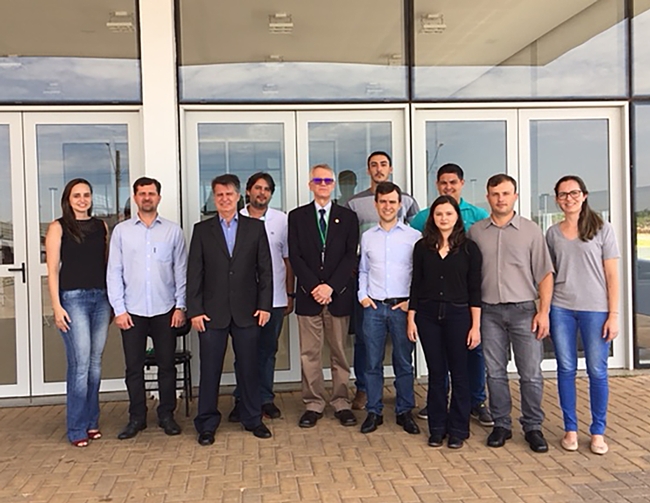
- Author: Kathy Keatley Garvey
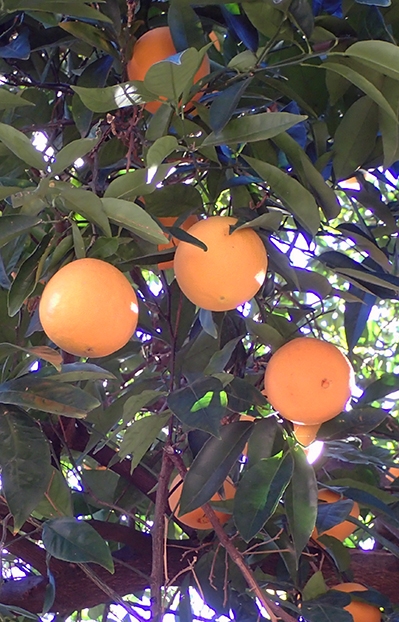
In a ground-breaking discovery encompassing six years of research, an international team of scientists led by UC Davis chemical ecologist Walter Leal announced they've identified the sex pheromone of the pest, which feeds on citrus and transmits the bacteria that causes the deadly citrus greening disease known as Huanglongbing (HLB).
Leal, a native of Brazil and a fellow of both the Entomological Society of America and the Entomological Society of Brazil, revealed the discovery during his presentation Dec. 5 at the 10th Annual Brazilian Meeting of Chemical Ecology in Sao Paulo. His team included scientists from UC Davis, University of Sao Paulo, and the Fund for Citrus Protection (FUNDECITRUS) from the state of Sao Paulo.
“Dr. Leal's discovery of the Asian citrus psyllid pheromone is a significant breakthrough in preventing the spread of this serious citrus insect, and may offer a less toxic method for its control,” said integrated pest management specialist Frank Zalom, distinguished professor with the UC Davis Department of Entomology and Nematology and a past president of the Entomological Society of America. He was not involved in the study.
“Having a lure to dramatically improve captures of this psyllid with the conventional sticky traps is a major progress toward integrated pest management,” said Professor Jose Robert Parra of the University of Sao Paulo.
Identifying the sex pheromone proved “complicated and quite a challenge” because of the insect's complex behavior and biology, said Leal, a UC Davis distinguished professor who has discovered the sex pheromones of moths, beetles, bugs, cockroaches, mites and other arthropods. A patent was filed Friday, Dec. 1, and journal publication is pending.
Citrus trees infected with HLB usually die within five years, according to the UC Statewide Integrated Pest Management Program. There is no known cure. “The only way to protect trees is to prevent spread of the HLB pathogen in the first place, by controlling psyllid populations and removing and destroying any infected trees,” UC IPM says on its website.
Native to Asia, the Asian citrus psyllid, Diaphorina ciri, was first detected in the United States in June 1998 in Palm Beach County, Florida, and in California in August 2008 in San Diego County. Scientists discovered HLB in Florida in August 2005, and in Los Angeles in March 2012. The mottled brown insect, about 3 to 4 millimeters long, or about the size of an aphid, is now widespread throughout Southern California and is now found in 26 of the state's 58 counties.
The Asian citrus psyllid, or ACP, feeds on new leaf growth of oranges, lemons, mandarins, grapefruit and other citrus, as well as some related plants. Infected psyllids can transmit the bacterium Candidatus Liberibacter asiaticus, which causes the fatal citrus disease. An early symptom of HLB in citrus is the yellowing of leaves on an individual limb or in a sector of a tree's canopy.
Currently growers are using yellow sticky traps to detect the insect and to monitor the population. “Efficient lures,” Leal said, “are sorely needed for sticky traps, particularly for early ACP detection. Otherwise, growers have to resort to regular sprays to avoid infection given that infected insects from gardens and noncommercial areas migrate to citrus farms.”
Pheromones and other semiochemicals are widely used in agriculture and medical entomology. “Growers use them as lures in trapping systems for monitoring and surveillance, as well as for strategies for controlling populations, such as mating disruption and attraction-and-kill systems,” Leal noted.
Although ACP is present in Arizona and California, the disease itself has not been established, Leal said. “The emphasis is on detection, eradication and limiting the spread of the disease. In Florida, where HLB is widespread, monitoring ACP populations is essential to avoid reinfection after eradication of infected plants.”
The detection of the pest has led to widespread eradication of citrus trees in China, Brazil and the United States. “In Brazil as many as 46.2 million citrus trees, representing 26 percent of the currently planted trees, have been eradicated since the detection of HLB in 2004,” Leal said. “In Florida, HLB has caused severe losses to the citrus industry. This year's production loss is estimated to be about 28 million fewer boxes of oranges than in 2014-2015.”
The announcement of the discovery coincides with the 40th anniversary celebration of FUNDECITRUS in Araraquara, Sao Paolo. “I am delighted that Walter Leal accepted our challenge to work on this project as the lead investigator,” said Juliano Ayres, FUNDECITRUS director. “The combination of his work ethics and qualifications are unparalleled. And, he loves challenges.”
In response to the ACP invasion in California, the California Department of Food and Agriculture (CDFA) has launched an extensive monitoring program to track the distribution of the insect and disease. They check yellow sticky traps in both residential areas and commercial citrus groves, and also test psyllids and leaf samples for the presence of the pathogen.
Survey methods for ACP include visual inspections, sweep netting, and placement of yellow sticky traps in trees in citrus nurseries, commercial citrus-producing areas and residential properties throughout the state, according to the CDFA. They also place sticky traps in California fruit packing houses, specialty markets, retail stores and airports that receive such produce from areas known to be infested with ACP.
Since August 2008, ACP has now been detected in 26 of California's 58 counties: Alameda, Contra Costa, Fresno, Imperial, Kern, Kings, Los Angeles, Madera, Merced, Monterey, Orange, Placer, Riverside, San Benito, San Bernardino, San Diego, San Joaquin, San Luis Obispo, San Mateo, Santa Barbara, Santa Clara, Solano, Stanislaus, Tulare, Ventura, and Yolo. “The ACP has the potential to establish itself throughout California wherever citrus is grown,” the CDFA says on its website.
CDFA has set up a hotline at 1-800-491-1899 for residents to report suspicious insects or disease symptoms in their citrus trees.
Resources:
UC IPM|
http://ipm.ucanr.edu/PMG/r107304411.html
California Department of Food and Agriculture (CDFA)
https://www.cdfa.ca.gov/plant/PDEP/target_pest_disease_profiles/ACP_PestProfile.html
Save Our Citrus: Hotline Information
UC Agriculture and Natural Resources (UC ANR)
http://anrcatalog.ucanr.edu/pdf/8205.pdf
(Update: The research was published in the Jan. 11 edition of the journal Scientific Reports.)
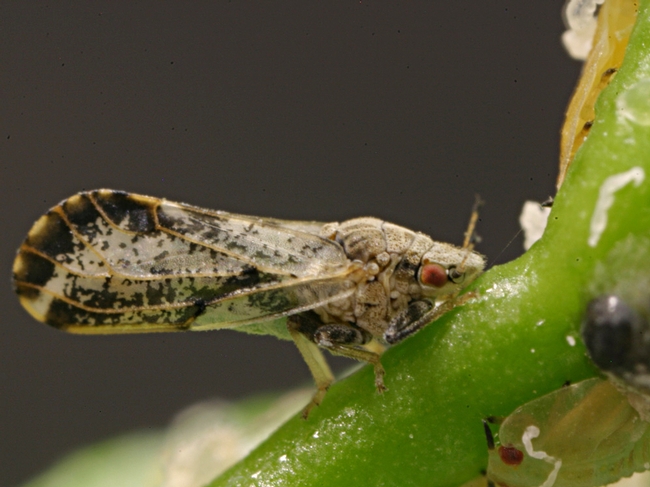
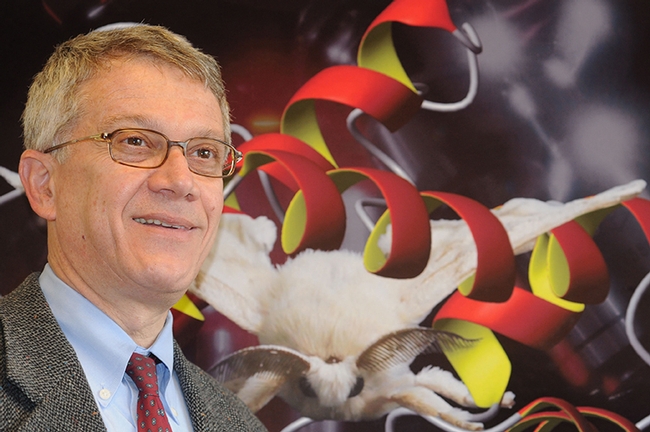
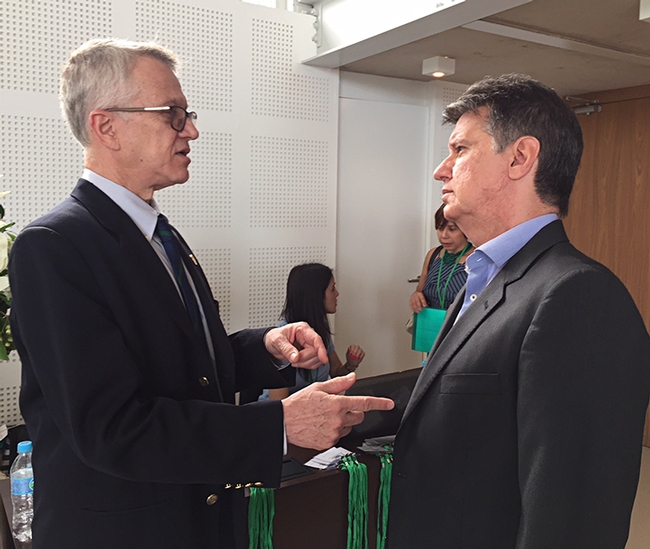
- Author: Kathy Keatley Garvey
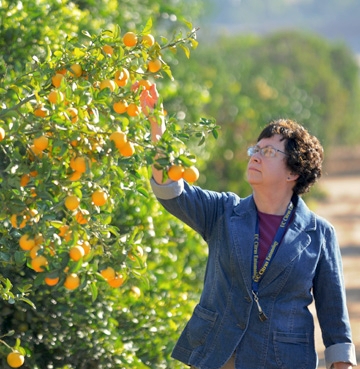
Think ACP. Think HLB. Think ASAP.
ACP spreads the killer huanglongbing (HLB) disease, also called "citrus greening," which is threatening California's citrus industry and residential landscapes. Some 60 percent of California homeowners have at least one citrus tree.
The brown-mottled, aphid-sized pest (Diaphorina citri), a native of Pakistan, was first detected in California in 2008. It earlier wreaked havoc in Florida's citrus industry. Due to HLB and citrus canker, the Florida citrus industry has lost nearly 50 percent of its citrus production in the past 10 years, according to the national Citrus Research Board.
California has more to lose. The Golden State is the No. 1 economic citrus state in the nation, ranking first in the U.S. in terms of economic value and second (after Florida) in terms of production, says the national Citrus Research Board. "California produces approximately 80 percent of the nation's fresh fruit citrus and is the country's main source (80 percent) of fresh-market oranges (Florida grows oranges mainly for juice)."
It's crucial to check for signs of this pest now--right now--because of the new leaf growth (flush). The young, tender leaves are perfect for psyllids. Tell-tale signs of psyllid presence include distorted new leaves and stems, waxy deposits, honeydew and sooty molds.
Checking for psyllids is our first line of defense.
“We encourage home citrus growers and farmers to go out with a magnifying glass or hand lens and look closely at the new growth,” said Beth Grafton-Cardwell, UC Agriculture and Natural Resources (UC ANR) citrus entomologist. “Look for the various stages of the psyllid – small yellow eggs, sesame-seed sized yellow ACP young with curly white tubules, or aphid-like adults that perch with their hind quarters angled up.”
Photos of the Asian citrus psyllids and the life stages are posted on the UC ANR website at http://ucanr.edu/acp. If you find signs of this insect, you're urged to telephone the California Food and Agriculture (CDFA) Exotic Pest Hotline at (800) 491-1899.
Yellow mottling on the leaves may be the first sign your citrus tree is infected with the HLB. Other indications are sour misshapen fruit. If your tree has HLB, that's a death sentence. It will die. You cannot save it.
CDFA officials recently removed a few HLB-infected trees in urban Los Angeles County.
“In California, we are working hard to keep the population of ACP as low as possible until researchers can find a cure for the disease,” Grafton-Cardwell said. “We need the help of citrus farmers and home gardeners.”
A new UC ANR ACP website for citrus growers and homeowners provides help in finding the pest and what to do next. The site, spearheaded by Grafton-Cardwell, includes an interactive map so viewers can locate where the psyllid is established, and areas being targeted.
The website outlines biological control efforts that are underway, and directions for insecticidal control, if it is needed. An online calculator allows farmers and homeowners to determine their potential costs for using insecticides.
Additional measures and precautions are advised:
- When planting new citrus trees, purchase the trees only from reputable nurseries. Do not accept tree cuttings or budwood from neighbors, friends or relatives. HLB can be spread by grafting.
- After pruning or cutting down a citrus tree, dry out the green waste or double bag it to ensure that live psyllids won't hitch a ride to another region and spread HLB from tree to tree.
- Control ants in and near citrus trees with bait stations. Scientists have released natural enemies of ACP in Southern California to help keep the pest in check. However, ants will protect the psyllids from the natural enemies. Ants feed on honeydew.
- Learn more about the Asian citrus psyllid and huanglongbing disease on UC ANR's Statewide Integrated Pest Management website.
- Assist in the control of ACP by supporting CDFA insecticide treatments on your citrus or treating the citrus yourself when psyllids are present.
- Support the removal of HLB-infected trees.
HLB has seriously impacted citrus production in Brazil, India, Asia, the Arabian Peninsula, Africa and now Florida. We don't want California added to that list.



